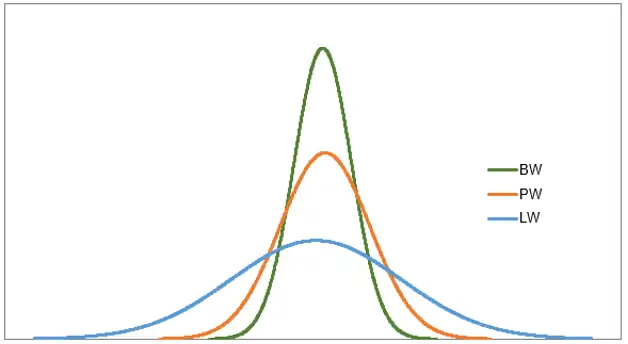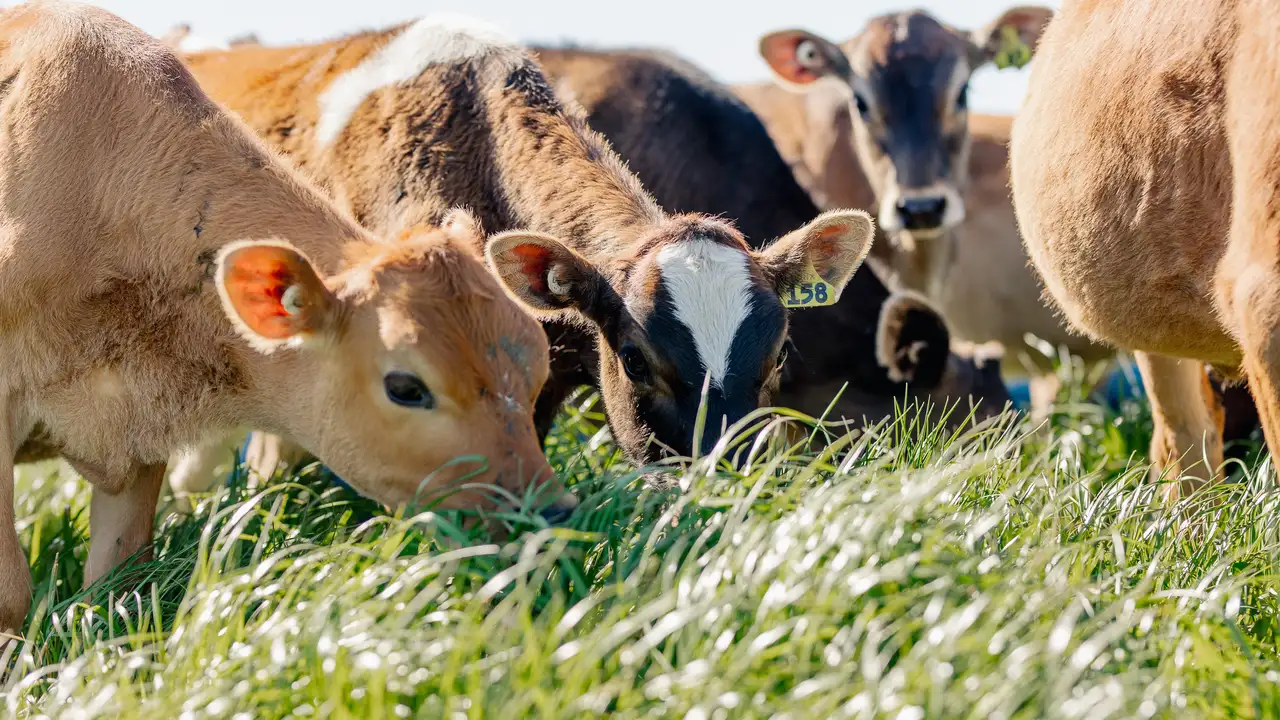Livestock Improvement Corporation’s (LIC’s) genomic evaluation systems generate three key indices—Breeding Worth (BW), Production Worth (PW), and Lactation Worth (LW)—to help farmers understand the factors that contribute to cow performance. Each index explains a different proportion of the variation that exist in a cow performance, reflecting unique influences on productivity and profitability.
Breeding Worth (BW): The Genetic Foundation
Breeding Worth is the cornerstone of genetic selection. It measures the genetic potential of a cow, focusing exclusively on heritable traits that can be passed to offspring. For production traits such as milk yield, fat, and protein, genetics account for approximately 25% of the total variation observed in a herd. This means BW highlights only the differences that are inherited, making it a crucial tool for selecting animals to breed the next generation. By focusing on BW, farmers can drive long-term genetic improvement in their herds, ensuring that desirable traits are consistently passed on.
Production Worth (PW): Genetics Plus Permanent Environment
Production Worth builds on BW by incorporating both genetic factors and permanent environmental effects. Permanent environment refers to influences that affect a cow throughout her life—such as early-life health events or hybrid vigour (heterosis)—but are not passed to her progeny. Together, genetic and permanent environmental factors explain approximately 60% of the variation in cow performance. PW is a strong indicator of how consistently a cow will perform across multiple seasons and is an assessment of lifetime profitability. For example, a cow that experienced optimal nutrition and health as a calf may consistently outperform her peers, even if her genetic potential is similar. PW helps farmers identify cows that are reliable producers year after year, supporting decisions around culling, retention, and management.
Lactation Worth (LW): Capturing All Sources of Variation
Lactation Worth is unique in its focus on the current season, blending genetic, permanent, and temporary (season-specific) factors to estimate a cow’s profitability right now.
Temporary factors include events like illness, calving difficulties, or changes in feed availability that impact a cow’s performance in a single season. LW is designed to explain 100% of the variation in a cow’s performance for the current season, making it the best measure for short-term management decisions. For instance, a cow that suffers from mastitis during one lactation may see a significant drop in LW for that season, even if her BW and PW remain unchanged. LW allows farmers to respond quickly to seasonal challenges, adjust feeding strategies, and manage health interventions to optimise productivity. It is particularly useful for identifying cows that are excelling or struggling in the current environment, enabling targeted support and intervention.
The factors contributing to each index is summarised in the image below.

The expression of variation can also be seen in the range of values for BW, PW, and LW. The following image provides an indication of the range in indices at the end of last season, for 2022-born herd tested animals (source: LIC).

The Importance of Herd Test Records
Herd test records are vital for calculating LW accurately. Each herd test provides a snapshot of a cow’s performance, and multiple tests throughout the season build a complete picture. Relying on a single herd test can lead to over- or underestimation of LW, especially if a cow peaks early or experiences a health setback. Regular herd testing—ideally four times per season—ensures that LW reflects the true performance of each cow, supporting more reliable management decisions.
Why Understanding Variation Matters
By breaking down the sources of variation, indices help farmers make targeted decisions—whether selecting animals for breeding, managing herd health, or optimising seasonal productivity. For example, a cow with high BW and PW but low LW in the current season may need additional support or intervention, while a consistently high LW across seasons indicates a robust and reliable producer, which will also be reflected in a higher PW.
Conclusion
Understanding the amount of variation each index explains empowers farmers to make informed decisions that drive genetic progress, improve herd health, and maximise profitability. By leveraging BW, PW, and LW, farmers can select the best animals for breeding, manage cows for consistent production, and respond effectively to seasonal challenges.
Possible slide bar fact:
It’s worth noting BW and PW for a cow are only updated with new herd test results until she’s 7 years old. After that, only LW keeps using new herd tests information.
This article was prepared by Rachel Bloxham for NZHFA magazine, September 2025.

